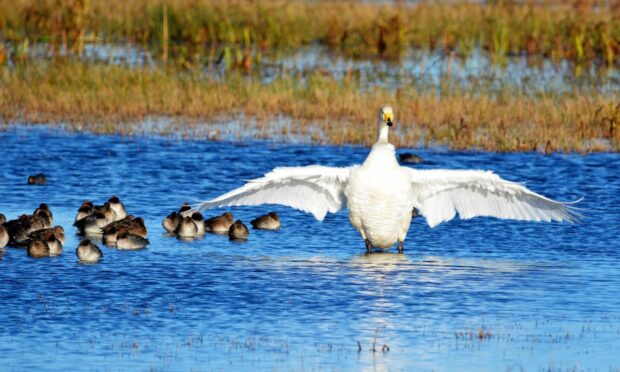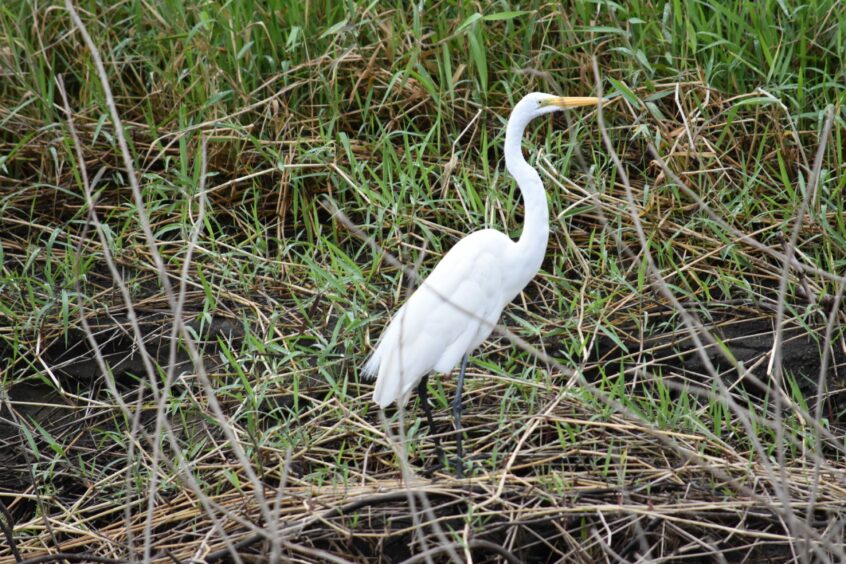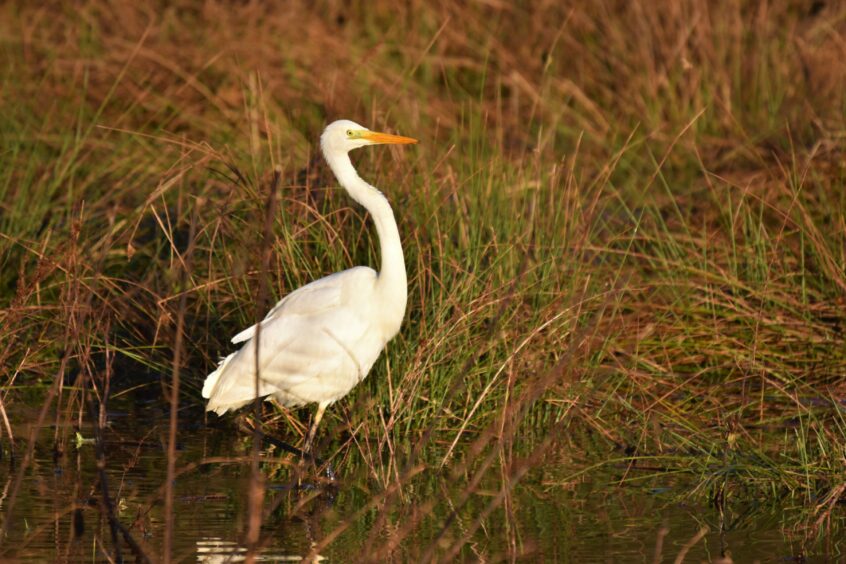Wildlife watching frequently delivers the dilemma of which way to look – and such a mental tussle developed recently as I sat in an observation hide overlooking a mosaic of sparkling pools at Loch of Strathbeg near Fraserburgh.
A grey heron stalked down a shallow creek towards me, its magnificent pale-flecked breast feathers glowing under the watery autumnal sun.
Behind the heron, a whooper swan busily preened itself on a raised mud bed, and beside it, a large group of teal gently slumbered.
Further beyond, a large white heron-like bird gradually worked its way along a grassy knoll, occasionally stabbing the ground.
It was great white egret – a scarce visitor to Scotland – and a bird I had not expected to see.
I concentrated on the heron initially, for it was so close that I fell under the spell of its magnificent splendour.
Caution and guile
Wading up to the top of its thighs, the heron was picture of caution and guile, carefully scrutinising the water for the slightest tell-tale swirl from a fish.
The water seemed rich in fish and several times the heron plunged its long and powerful beak into the water to snap up small prey items.
It was hard to discern what that heron was catching due to the small size of its captures, but I suspected it was minnows or sticklebacks.
Perch, pike and eels also thrive in the loch.
The heron soon tired of its fishing foray and took to the air on measured wing beats, sweeping away from sight.
I brought my binoculars to bear upon the lone whooper swan, which was so engaged in preening its feathers that it barely ever looked up.
Winter visitors
Whoopers are winter visitors from Iceland and the RSPB reserve at Loch of Strathbeg is an internationally important site for these snowy angels from the north.
Hundreds of whoopers descend upon the loch in autumn, with many then gradually dispersing elsewhere.
Loch of Strathbeg is Britain’s largest dune loch, a shallow nutrient-rich body that is a haven for breeding, migrating and wintering birds.
It often attracts rarities such as the great white egret, which became the final focus of my attention.
Not far from where it stood, a little egret also probed the shallows of the loch – two white-cloaked cousins more traditionally associated with southern climes rather than the windswept lochs and estuaries of Scotland.
Little egrets have colonised England and Wales big style in recent decades, and are now moving into Scotland, while great white egrets are also becoming more frequent.
While the unrelenting force of global warming is undoubtedly the principal driver, I like to think that our more enlightened attitude towards nature in recent times, most especially the protection and enhancement of wetlands throughout northern Europe, has also helped these exquisite birds spread their wings into pastures new.
Whether these egrets truly belong here or not is a moot question, but ebb and flow are part and parcel of nature, and for me, their growing presence in Scotland brings new vibrancy to the landscape.





Conversation